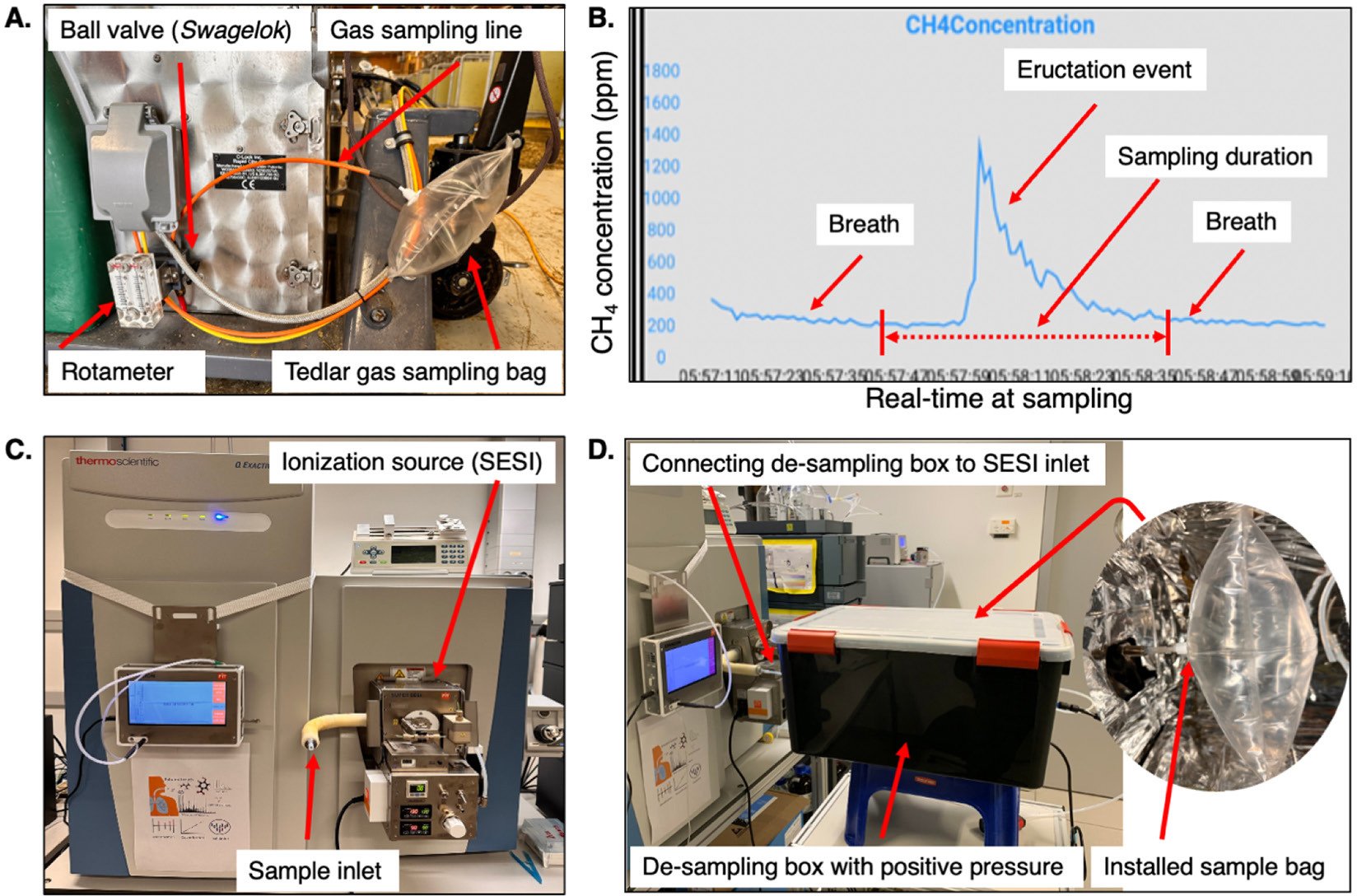Exhaled volatile fatty acids, ruminal methane emission and their diurnal patterns in lactating dairy cows
M.Z. Islam, S. Giannoukos, Räisänen, K. Wang, X. Ma, F. Wahl, R. Zenobi, M. Niu.
Abstract
To date, the commonly used methods to assess rumen fermentation are invasive. Exhaled breath contains hundreds of volatile organic compounds (VOC) that can reflect animal physiological processes. In the present study, for the first time, we aimed to use a non-invasive metabolomics approach based on high-resolution mass spectrometry to identify rumen fermentation parameters in dairy cows. Enteric methane (CH4) production from 7 lactating cows was measured 8 times over 2 consecutive days using the GreenFeed system. Simultaneously, exhalome samples were collected in Tedlar gas sampling bags and analyzed offline using a secondary electrospray ionization high-resolution mass spectrometry (SESI-HRMS) system. In total, 1,298 features were detected, among them targeted exhaled volatile fatty acids (eVFA, i.e., acetate, propionate, butyrate), which were putatively annotated using their exact mass-to-charge ratio. The intensity of eVFA, in particular acetate, increased immediately after feeding and followed a similar pattern observed for ruminal CH4 production. The average total eVFA concentration was 35.4 count-per-second (CPS), and among the individual eVFA, acetate had the greatest concentration, averaging 21.0 CPS followed by propionate at 11.5 CPS, and butyrate at 2.82 CPS. Further, exhaled acetate was on average the most abundant of the individual eVFA at around 59.3%, followed by 32.5 and 7.9% of the total eVFA for propionate and butyrate, respectively. This corresponds well with the previously reported proportions of these VFA in the rumen. The diurnal patterns of ruminal CH4 emission and individual eVFA were characterized using a linear mixed model with cosine function fit. The model characterized similar diurnal patterns for eVFA and ruminal CH4 and H2 production. Regarding the diurnal patterns of eVFA, the phase (time of peak) of butyrate occurred first, followed by that of acetate and propionate. Importantly, the phase of total eVFA occurred around 1 h before that of ruminal CH4. This corresponds well with existing data on the relationship between rumen VFA production and CH4 formation. Results from the present study revealed a great potential to assess the rumen fermentation of dairy cows using exhaled metabolites as a non-invasive proxy for rumen VFA. Further validation, with comparisons to rumen fluid, and establishment of the proposed method are required.



